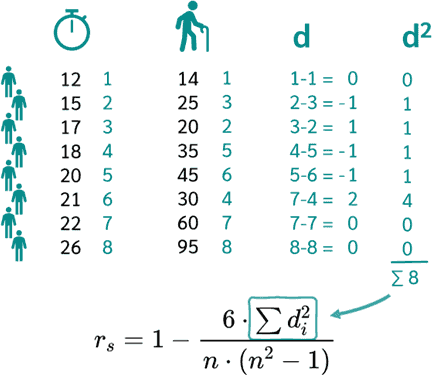Inductive vs Deductive research method
Inductive vs Deductive research method null
Inductive Research Method:
Purpose: To generate theories or hypotheses from observations.
Process:
Collect specific observations.
Identify patterns and generalizations in the observations.
Formulate a theory or hypothesis that explains the patterns.
Characteristics:
Data-driven
Focuses on detailed observations
Aims to identify broader patterns or principles
Examples:
Studying a sample of patients to identify common characteristics of a particular disease.
Observing the behavior of animals to develop theories about species interactions.
Deductive Research Method:
Purpose: To test existing theories or hypotheses through observations.
Process:
Start with a theory or hypothesis.
Formulate predictions based on the theory.
Collect data to test the predictions.
Characteristics:
Theory-driven
Focuses on testing hypotheses
Aims to confirm or refute theories
Examples:
Conducting an experiment to test the hypothesis that a certain drug reduces symptoms of a disease.
Surveying a population to confirm or reject a theory about the relationship between education and income.
Key Differences:
Data collection: Inductive research collects data first, while deductive research starts with a theory.
Directionality: Inductive research moves from specific to general, while deductive research moves from general to specific.
Goal: Inductive research aims to develop new theories, while deductive research aims to test existing ones.
Applications:
Inductive research is often used in exploratory research or when there is limited existing knowledge.
Deductive research is often used in confirmatory research or when there is a well-developed theory to test.
Example 1:
Inductive Research Method in Diabetes
Example: A researcher collects data on a group of patients with diabetes and observes a pattern of high blood sugar levels after consuming sugary drinks.
Process:
Observation: Patients with diabetes have high blood sugar levels after consuming sugary drinks.
Induction: Based on these observations, the researcher hypothesizes that sugary drinks increase blood sugar levels in people with diabetes.
Testing: Further studies are conducted to test this hypothesis.
Conclusion: If the hypothesis is supported, the researcher concludes that sugary drinks contribute to high blood sugar levels in individuals with diabetes.
Deductive Research Method in Diabetes
Example: A researcher starts with a known theory that states that insulin resistance leads to diabetes.
Process:
Deduction: The researcher predicts that if insulin resistance is present, then diabetes will develop.
Testing: A study is designed to measure insulin resistance and its association with diabetes.
Verification: If the study finds that insulin resistance is strongly associated with the development of diabetes, the theory is supported.
Conclusion: The researcher concludes that insulin resistance is a significant risk factor for diabetes.
Example 2:
Inductive Research
Hypothesis: Patients with a higher body mass index (BMI) are more likely to develop cardiovascular disease.
Method: Survey a large population and collect data on their BMI and health outcomes.
Conclusion: A correlation is found between higher BMI and increased risk of cardiovascular disease, supporting the hypothesis.
Deductive Research
Hypothesis: Using a new drug X will reduce the risk of heart attack in patients with high cholesterol.
Method: Design a clinical trial where patients are randomly assigned to receive either Drug X or a placebo. The incidence of heart attacks is then compared between the two groups.
Conclusion: If the incidence of heart attacks is significantly lower in the group receiving Drug X, the hypothesis is supported.
......................................................................................................
👉 For the data analysis, please go to my Youtube(Ads) channel to Watch Video (Video Link) in
Youtube Channel (Channel Link) and Download(Ads) video.
💗 Thanks to Subscribe(channel) and Click(channel) on bell 🔔 to get more videos!💗!!
- Tell: (+855) - 96 810 0024
- Telegram: https://t.me/sokchea_yann
- Facebook Page: https://www.facebook.com/CambodiaBiostatistics/
- TikTok: https://www.tiktok.com/@sokcheayann999
- STATA for dataset restructuring, descriptive and analytical data analysis
- SPSS for dataset restructuring, data entry, data check, descriptive, and analytical data analysis
- Epi-Info for building questionnaires, data check, data entry, descriptive, and analytical data analysis
- Epidata-Analysis for dataset restructuring, descriptive and analytical data analysis
- Epi-Collect for building questionnaires, remote data entry, mapping, and data visualization
- Epidata-Entry for building questionnaires, data check, data entry, and data validation
ABA Account-holder name: Sokchea YAN
ABA Account number: 002 996 999
ABA QR Code:
or tap on link below to send payment:
https://pay.ababank.com/iT3dMbNKCJhp7Hgz6
✌ Have a nice day!!! 💞







Comments
Post a Comment